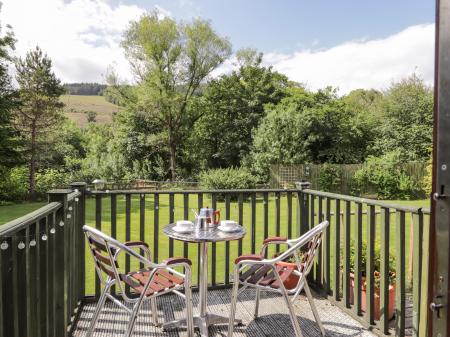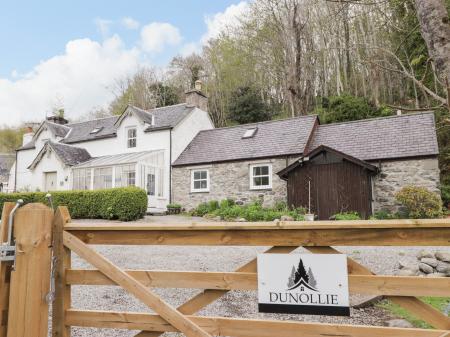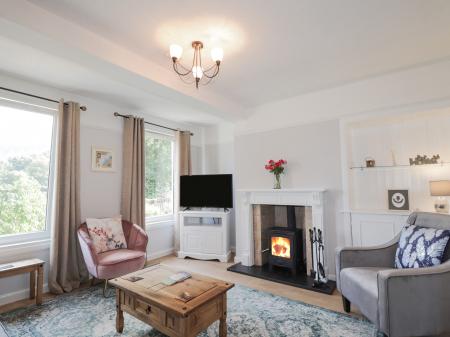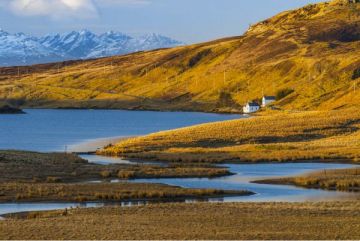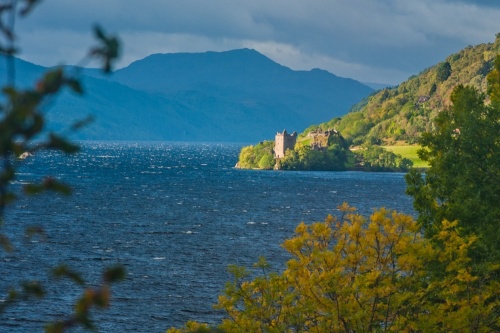
History
The castle dates to the 13th century, but the history of the site goes back much further. Around the year 580 AD the Irish missionary, St Columba, came to the area to baptise a Pictish nobleman by the name of Emchath. We do not know for certain where Emchath lived, but Pictish artefacts have been found at Urquhart, so it is possible the Picts had a broch here.
In 1228 Alexander II quashed a rebellion in Moray. He thought it prudent to create a friendly buffer against further rebellion, so he granted the lordship of Urquhart to his son-in-law, Alan Durward. It was probably Durward who built the curtain wall that protects the highest point of the castle.
Urquhart was strengthened by the powerful Comyn lords around 1275, then garrisoned by the English in 1296, at the outbreak of the Scottish Wars of Independence.

Sir Alexander Forbes drove out the English in 1297, but Edward I recaptured it in 1303 after a siege that left the defenders weakened by hunger.
Forbes and all his followers were slain on Edward's command, but retribution was not slow to come, nor was it gentle. In 1306 Robert Bruce captured Urquhart once more and ruthlessly killed all the English defenders.
The English were back in 1333, but troops loyal to Bruce's son, David II, withstood the siege. Recognising the strategic importance of Urquhart, the Stewart kings lavished money on strengthening the defences, creating a complex array of walls, a twin-towered gatehouse, keep, and a separate citadel.

It was not only against the English that Urquhart Castle had to be defended; throughout the 15th and 16th centuries, the castle was attacked on numerous occasions by the MacDonalds, Lords of the Isles.
Urquhart lay on the border of land controlled by the Scottish crown and the MacDonalds, and from 1437 the MacDonalds attacked on almost an annual basis. They succeeded in capturing the castle in 1452, but the crown retook it in 1456.
The Lordship of the Isles was finally subdued for good in 1495, but even then the attacks did not cease, for alliances of western clans launched periodic attacks whenever the opportunity arose. The castle withstood attacks in 1513 following the Battle of Flodden, and again in 1544.
The castle was last attacked in 1689, during the first Jacobite Rising, and finally deserted in 1692. Rumour suggests that the departing royal troops blew up the castle gatehouse to prevent it ever being used again.

What to See
The most impressive feature of the castle is an imposing 16th-century tower house. You can walk the ruined ramparts and get fantastic views down the loch - watch out for the Loch Ness Monster, which has been 'sighted' several times from the castle towers.
Near the gatehouse are the ruins of the castle stables. Most medieval Scottish horses were much smaller than today's breeds, roughly the size of a modern pony. The stables would have housed 'coursours', or riding horses, and 'capills', or work horses more suited to pulling carts.
Beyond the stables stands the ruined great hall, the heart of the medieval fortress, where the lord or his constable entertained guests and where they administered justice. What we see today is the ruin of the vaulted cellars below the hall. You can see holes in the walls where huge timber beams rested. The beams were used to support the floor of the hall above.
The great hall was built by the powerful Comyn family in the late 13th century. To its left is the great chamber, added in the 14th century as a private apartment for the lord and his family.
The great hall was damaged in an attack in the early 15th century and replaced by a less impressive building, and the great chamber and kitchens were abandoned.

One intact part of the castle is a barrel-vaulted storeroom, the lowest section of a donjon tower built by the Comyns in the late 13th century. By 1500 the donjon tower was in ruins so the Grant family built a new tower on top of the earlier cellar storeroom. The chamber is now used to display carved pieces of medieval stonework found on site.
The Prison Cell
Inside the gatehouse is a prison cell, a dismal, windowless chamber where prisoners were held while awaiting trial. They could expect no mercy from the lord; most medieval prisoners were fined, but others could have their ears nailed to a wooden beam, but execution was also common.
One prisoner known to have been held at Urquhart Castle was the Gaelic bard Domhnall Donn, who was accused of stealing cattle. According to legend, his actual crime was to fall in love with the laird of Grant's daughter. Domhnall Donn was thrown in prison at Urquhart, where he composed several moving songs before the laird had him executed for his 'crime'.

The Constable's Lodging
From the prison, a stair leads up to the Constables Lodging atop the gatehouse. Here the Constable, who ran the castle in his lord's absence, had a suite of rooms. The first known Constable of Urquhart Castle was William Fitzwarin, instaled by Edward I in 1296.
The following year Fitzwarin was ambushed by Andrew Moray on the road from Inverness. Moray besieged the castle but was unable to force the garrison to surrender. Moray went south to join William Wallace at the Battle of Stirling Bridge. The Scots won but Moray was fatally wounded in the conflict.
The Constable's Lodging has its own garderobe, which emptied outside the castle walls. Having his own garderobe was a luxury, indicating the Constable's high status and importance in not just running the castle but organizing its defences and overseeing construction when the lord was absent.

Outside the castle walls is a large space known as 'castle toun', which held a variety of workshops, including space for leather tanning and metalworking. We know that bronze and iron were smelted here, and household items such as nails were produced.
Records show that in 1509 King James IV ordered the laird of Urquhart to plant an orchard outside the castle walls. Though there are no obvious signs of the orchard or the light industry that once flourished here, medieval apple pips have been found nearby, suggesting that the king's orders were carried out.
Another surviving feature at Urquhart Castle is a corn-drying kiln dating to the early 16th century. Grain was dried in the gatehouse basement before it was ground into flour. Most of the food for the castle inhabitants came from four farming townships located on the higher ground overlooking the castle and the loch. Archaeologists have found traces of oats and barley. Most people ate porridge, oat bread, and oatcakes known as bannocks. Only the wealthy could afford to eat meat.
There are numerous displays of historic artefacts found during excavations on the site, and the modern visitor centre tells the story of the long history of the castle and its inhabitants.

Visiting
Urquhart Castle is signposted on the A82 just south of Drumnadrochit. It is extremely easy to find, and there are large parking areas for cars, camper vans, and tour coaches.
We came as a family, and our kids absolutely loved it. Our daughter insisted that she saw Nessie, but I won't pass judgement on that. I thought the exhibition in the visitor centre was excellent, and really gave a good understanding of the history of the site. You can opt to start your visit by watching a (free) short film recounting the castle's long and eventful history, or you can skip the film and simply walk down the gently sloping paved path to the castle entrance.
There is a lot to see, so allow plenty of time. Urquhart Castle is traditionally one of the most popular visitor destinations in Scotland, so expect lots of other visitors, but honestly, the site is big enough that you won't feel overwhelmed by crowds.
We've visited several times and each time we see something interesting that we'd missed on our previous visits.








 We've 'tagged' this attraction information to help you find related historic attractions and learn more about major time periods mentioned.
We've 'tagged' this attraction information to help you find related historic attractions and learn more about major time periods mentioned.